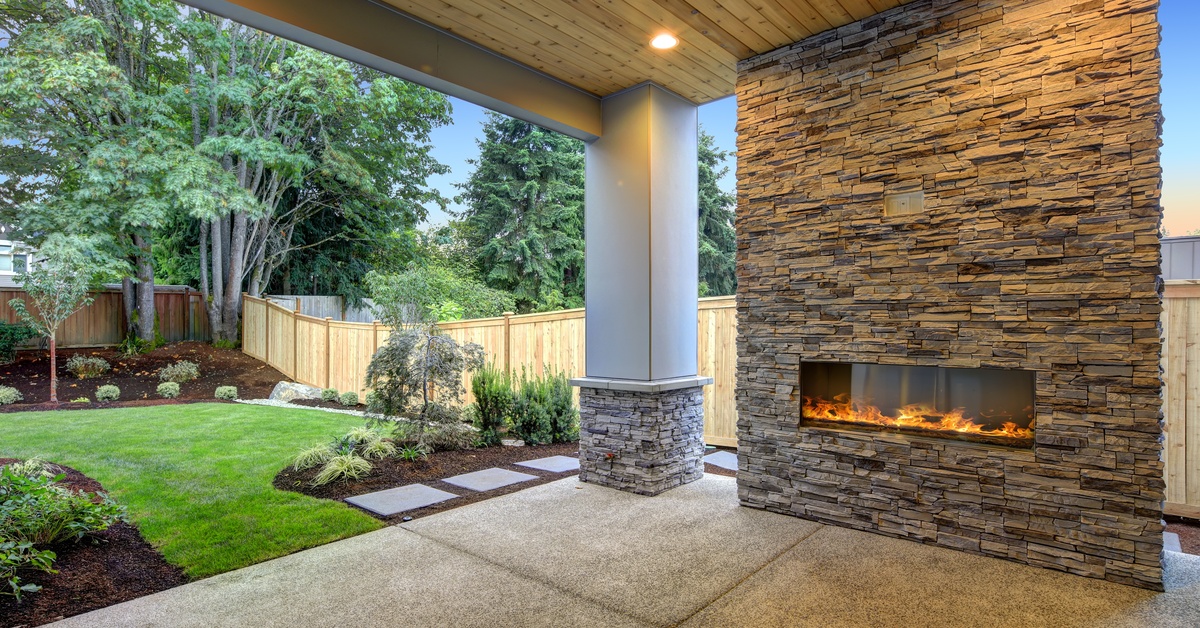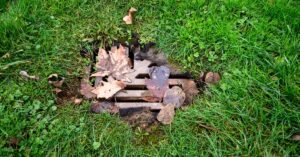There’s something magical about gathering around a crackling fire under the stars. The warm glow on your face, the gentle pop of burning wood, and the way conversations seem to flow more easily—outdoor fire features transform any backyard into an inviting retreat. But with so many options available, selecting the right fire feature for your outdoor space can feel overwhelming.
The perfect fire feature does more than just provide warmth. It creates a focal point that draws people together, extends your outdoor season well into cooler months, and adds significant value to your property. Whether you’re hosting summer barbecues or enjoying quiet evenings with family, the right choice will serve as the heart of your outdoor living space for years to come.

Understanding Different Types of Fire Features
When considering fire features for your outdoor space, you’ll encounter three main categories, each offering distinct advantages and considerations.
Fire Pit
Fire pits represent the most versatile option for most homeowners. These circular or square features can be portable or permanently installed, giving you flexibility in placement and design. Wood-burning fire pits create that authentic campfire experience with natural crackling sounds and the nostalgic aroma of burning logs. Gas fire pits offer convenience and control—you can adjust the flame height instantly and won’t need to store firewood or clean up ash.
The portability of many fire pit designs means you can rearrange your outdoor space as needed. However, permanent installations often look more polished and integrated into your overall landscape design. Consider how frequently you might want to change your layout when making this decision.
Outdoor Fireplaces
Outdoor fireplaces bring elegance and grandeur to any backyard. These substantial structures create a dramatic focal point and provide excellent wind protection for the flame. The vertical design naturally draws the eye upward and can complement your home’s architecture beautifully.
Most outdoor fireplaces are permanent, making them significant investments that require careful planning during the design phase. They typically offer more heat output than fire pits and create a cozy, room-like atmosphere in your outdoor space. The enclosed design also makes them safer around children and pets.
Chimineas
Chimineas offer a charming middle ground between fire pits and full fireplaces. These clay or metal structures feature a bulbous base with a tall, narrow chimney that directs smoke upward and away from seating areas. Traditional clay chimineas bring southwestern flair to your space, while modern metal versions can complement contemporary designs.
The contained design of chimineas makes them particularly suitable for smaller spaces or areas where neighbors are close by. The chimney naturally creates a stronger draft, reducing the smoke issues that can sometimes plague open fire pits.
Selecting the Right Materials
The materials you choose for your fire feature will significantly impact both its appearance and longevity. Each option brings distinct characteristics that affect maintenance requirements, weather resistance, and overall aesthetics.
Natural Stone
Natural stone remains the premium choice for permanent fire features. Materials like fieldstone, flagstone, and granite create a stunning visual appeal that only improves with age. Stone fire features seamlessly integrate into residential hardscape design projects, complementing stone patios, walkways, and retaining walls. The thermal mass of stone also means it continues radiating heat long after the fire dies down.
Different stone types offer varying textures and colors. Rough fieldstone creates a rustic, natural appearance, while cut stone provides clean lines for modern designs. Consider how the stone will look in all seasons—some materials show weather staining more than others.
Brick
Brick offers classic appeal and excellent heat retention. Traditional red brick creates a warm, inviting look that complements many architectural styles. Brick is also relatively cost-effective compared to natural stone while still providing the permanence and durability of masonry construction.
Fire-rated bricks are essential for the interior surfaces that directly contact flames. Regular building bricks can crack or crumble at high temperatures, posing safety hazards and requiring costly repairs.
Metal
Metal fire features provide contemporary styling with relatively low maintenance requirements. Steel fire bowls and rings create sleek, modern aesthetics that work well with minimalist landscape designs. Copper develops a beautiful patina over time, while weathering steel (often called Corten steel) intentionally rusts to create an attractive, stable finish.
The main advantage of metal fire features is their ability to heat up quickly and provide immediate warmth. However, they cool rapidly once the fire dies, unlike masonry options that continue to radiate heat for hours.

Determining Size and Placement
Getting the size and location right is crucial for both safety and enjoyment. Your fire feature should feel proportional to your space while providing adequate clearance from structures and combustible materials.
Gathering Size
For sizing, consider your typical gathering size. A fire feature that’s too small won’t provide enough warmth for your group, while an oversized feature can overwhelm a modest patio. Generally, fire pits should be at least three feet in diameter for groups of four to six people, with larger features better suited for bigger gatherings.
Heat Output
The heat output also affects sizing decisions. Wood-burning features typically produce more heat than gas options, so you might choose a smaller wood-burning fire pit to achieve the same warmth as a larger gas unit.
Placement
Placement requires careful planning to balance safety, functionality, and aesthetics. Fire features should sit at least ten feet from your home, shed, or other structures. Overhanging tree branches need at least fifteen feet of clearance, and you’ll want to consider prevailing wind patterns to avoid smoke problems.
Sight Lines
Think about sight lines from your home’s interior spaces. A well-placed fire feature becomes a beautiful focal point visible through patio doors or windows, extending the visual appeal of your outdoor space into your home.
Accessibility
Access for fuel and maintenance also influences placement decisions. Wood-burning features need convenient access for bringing in logs and removing ashes. Gas features require a connection to your home’s gas line or space for a propane tank.
Safety Considerations
Fire safety should guide every decision about your outdoor fire feature. Proper planning prevents accidents and protects your property investment.
Clearance Requirements
Clearance requirements extend beyond just keeping the feature away from structures. Consider the full area where sparks might land, especially on windy days. Keep a garden hose or fire extinguisher nearby, and never leave a fire unattended.
Local Regulations
Local regulations vary significantly between municipalities. Many areas require permits for permanent fire features, and some neighborhoods have restrictions on open flames. Check with your local fire department and homeowner’s association before beginning any project.
Wind Protection
Wind protection improves both safety and enjoyment. Fire screens help contain sparks while still allowing you to enjoy the visual appeal of the flames. For windy locations, consider fire features with higher sides or glass wind guards.
Maintenance for Long-Term Enjoyment
Regular maintenance keeps your fire feature safe, attractive, and functional for decades. The specific requirements vary by material and fuel type, but some principles apply to all installations.
Cleaning and ash removal are essential for wood-burning features. Allow ashes to cool completely before removal, and store them in a metal container away from combustible materials. Some gardeners save wood ashes for soil amendment, as they provide potassium and raise soil pH.
Weather protection extends the life of your investment. Covers protect fire features from rain and snow when not in use. For gas features, annual inspection of connections and burners prevents problems and maintains safe operation.
Seasonal maintenance includes checking for cracks in masonry, rust on metal components, and proper drainage around the feature. Address small problems quickly to prevent expensive repairs later.
Creating Your Perfect Gathering Space
Choosing the right outdoor fire feature transforms your backyard into a destination that friends and family will treasure. Consider your space, lifestyle, and long-term goals to make the best choice for your situation.
Remember that your fire feature will likely outlast many other outdoor improvements, so invest in quality materials and professional installation when appropriate. The warmth, ambiance, and gathering opportunities it provides will reward you for decades to come.
Take time to visualize how your chosen feature will look and function in all seasons. The perfect fire feature becomes the heart of your outdoor living space, creating memories that last long after the embers have cooled.



